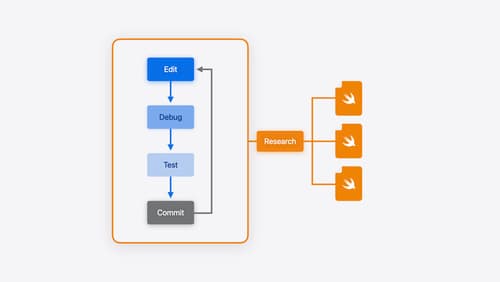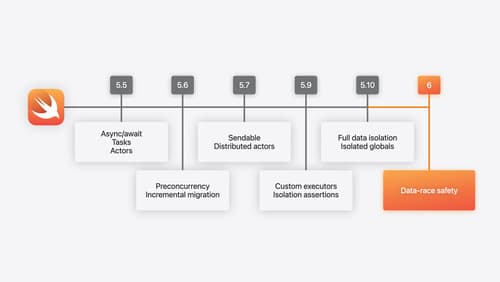CustomNSError
Asked on 2024-08-30
1 search
The concept of CustomNSError is not directly mentioned in the provided context from the WWDC sessions. However, the context does discuss error handling in Swift, including how to handle and validate errors in testing and programming.
For example, in the session titled "Go further with Swift Testing," there is a discussion about customizing error validation to check for specific types or cases of errors. This can be useful when you want to ensure that the error your code throws is the correct one for the situation. Additionally, the session "A Swift Tour: Explore Swift’s features and design" covers how Swift enums can be used to represent error types by conforming to the Error protocol.
If you are interested in learning more about error handling in Swift, you might find the following sessions useful:
These sessions provide insights into how Swift handles errors and how you can test for them effectively. If you have a specific question about CustomNSError, it might be helpful to refer to Swift's official documentation or explore more detailed resources on error handling in Swift.

Xcode essentials
Edit, debug, commit, repeat. Explore the suite of tools in Xcode that help you iterate quickly when developing apps. Discover tips and tricks to help optimize and boost your development workflow.

Get started with HealthKit in visionOS
Discover how to use HealthKit to create experiences that take full advantage of the spatial canvas. Learn the capabilities of HealthKit on the platform, find out how to bring an existing iPadOS app to visionOS, and explore the special considerations governing HealthKit during a Guest User session. You’ll also learn ways to use SwiftUI, Swift Charts, and Swift concurrency to craft innovative experiences with HealthKit.

What’s new in Swift
Join us for an update on Swift. We’ll briefly go through a history of Swift over the past decade, and show you how the community has grown through workgroups, expanded the package ecosystem, and increased platform support. We’ll introduce you to a new language mode that achieves data-race safety by default, and a language subset that lets you run Swift on highly constrained systems. We’ll also explore some language updates including noncopyable types, typed throws, and improved C++ interoperability.
